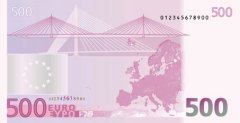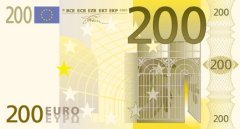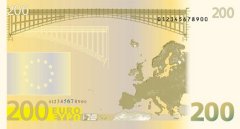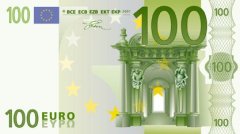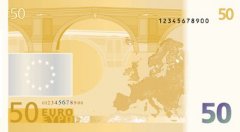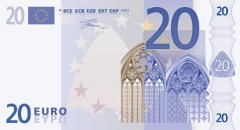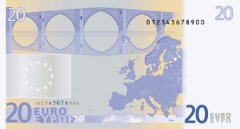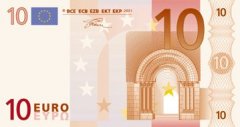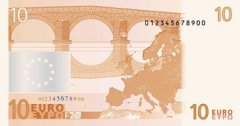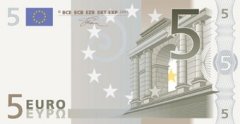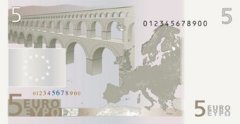Euro Banknotes 2002
Photos & Information about Eurozone Banknotes.
Euroland
On January 1st, 2002, twelve of the fifteen European Union members completed
their conversion to using the Euro instead of their own national currencies.
These twelve states comprise the Eurozone, sometimes called Euroland.
Euro Bank Notes
There are 7 euro notes. In different colours and sizes they are denominated
in 500, 200, 100, 50, 20, 10 and 5 euros. The designs are symbolic for
Europe's architectural heritage. They do not represent any existing
monuments. Windows and gateways dominate the front side of each banknote as
symbols of the spirit of openness and cooperation in the EU. The reverse
side of each banknote features a bridge from a particular age, a metaphor
for communication among the people of Europe and between Europe and the rest
of the world. Final designs were announced in December 1996 at the Dublin,
European Council. All notes carry advanced security features.
Twelve States - One Set of Banknotes
Each member state produces their own designs of Euro coins, although only
one side of each coin is allowed to be different. For banknotes, all
countries use identical designs on both sides of each denomination of note,
so that there is only one set of Euro note designs.
Seven Denominations or Values
There are seven different denominations (face value) of Euro banknotes,
these are as follows:-
- 500 Euros
- 200 Euros
- 100 Euros
- 50 Euros
- 20 Euros
- 10 Euros
- 5 Euros
So the total face value of a complete set of 7 notes adds up to 885 Euros.
Photos of Eurozone Banknotes.

